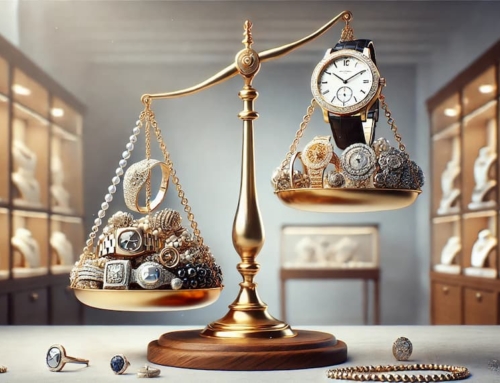By Abe Sherman, CEO BIG
It turns out that Vaping, supposedly a healthier alternative to cigarette smoking, is potentially as addictive and as harmful a nicotine delivery system as tobacco. Watching a news program about the problems associated with Vaping, especially with young people, it dawned on me that we have our own Vaping issue: Carbon Vapor Disposition, or CVD man-made (synthetic) diamonds.
Growers of this material claim that man-made diamonds are identical to natural diamonds. While this material does have the same Chemical, Optical and Physical properties as diamond, the material is NOT the same as diamond. From now on, I’m going to use the term “diamond” for natural, mined diamonds and “synthetic” for anything that comes out of a machine.
An eye-opening and simple definition of what synthetic diamonds are, is merely “crystalized carbon”. While the two materials share the same properties, they are not the same. The growth of synthetic material is very different because of the differences in the two growing processes. Diamonds take many millions (or perhaps billions) of years to form into crystals due to the melting of carbon material as a result of molten magma deep underground. It’s especially fun to know that they formed in the earth billions of years ago and there aren’t any new diamonds being formed in the earth! CVD diamonds, on the other hand, grow in just a few short weeks as carbon vapor is distributed onto a seed crystal of synthetic diamond. Synthetic CVD diamonds are grown from vapor and they are not the same as a diamond.
If you think synthetic CVD diamonds are exactly the same as diamond, either because you haven’t studied gemology or because this is what you’ve been told by those who sell it, or both, consider this: Every single synthetic, lab-grown, man-made diamond can be identified by the testing equipment readily available today from a variety of suppliers. The fact that 100% of this material can be separated from natural diamond proves that they are not the same! They cannot be the same, by definition, since they can be distinguished from each other.
To drive this point home, I started carrying a synthetic ruby around with me to show it to jewelers who believe that synthetic diamond is the same as natural diamond. In any group of jewelers, there are usually a few gemologists (thank Goodness) who can easily identify the ruby for what it is, synthetic. Synthetic ruby has been around for a very long time (you should look it up, there’s going to be a test), and the fact that our industry has accepted the term synthetic for all other man-made gemstones gives us some comfort in understanding the difference in the material. But over the past few years there has been a debate raging about whether man-made diamonds are synthetic or not; after all they have the same chemical, optical and physical properties of their natural counterpart, but so do synthetic colored gemstones.
Like Vaping, however, our industry, especially in melee, is becoming more and more addicted. Some are looking for better margins while some are unfortunately misrepresenting the material they are selling, but either way, synthetic diamond is not a “safer” alternative to natural diamonds. Crystalized carbon is not diamond; it’s vapor. I believe the underlying value of this material is built on vapor, or more commonly referred to, perhaps, as smoke and mirrors.







